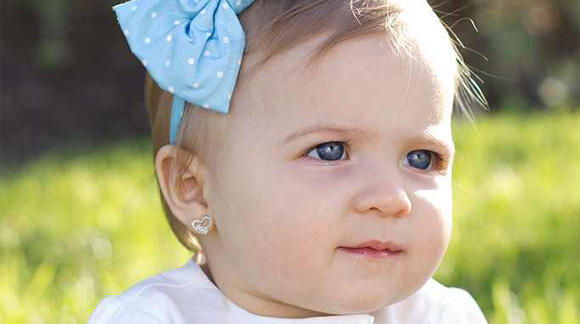
Here is the continuation of the 7 crucial factors to consider before piercing your baby’s ears.
3. Possibility for Keloid Formation. Piercing at a very young age significantly lowers the chance of keloid formation. A study by Dr. Joshua E. Lane, a professor at the Mercer University School of Medicine, found just that. The study, which was co-researched with Dr. Jennifer Waller and Dr. Loretta S. Davis (from Georgia College), surveyed 32 patients all whom have keloids which have resulted from ear piercings. The study found that 80% of people who got their first piercing after the age of 11 had a keloid formed from that first piercing, whereas only 23.5% of those who got their first piercing under the age of 11 had a keloid formed. Source: keloidcenter.com
2. Potential Complications. The most common complication that might happen is infection. It is caused due to the use of unsterilized equipment by the piercer. Other potential complications that might happen include: keloid formation, allergic reaction, and tearing of the ear lobes. Source: newkidscenter.com
1. Consult Your Pediatrician. Before getting your baby’s ears pierced, many readers recommend you consult your pediatrician. He or she will be the best professional to assess whether your baby’s ears are a suitable size for earrings. Additionally, a pediatrician should determine what vaccines your child should need prior to piercing. Source: popsugar.com
While it is a fact that piercing your baby’s ears is a serious matter, you can make it safe. Make sure to do your research on the matter and consult your pediatrician regarding things that may concern you.
Keep in mind that healing and caring for your baby’s piercings is a very important part of this endeavor.
The American Academy of Pediatric recommends the following when it comes to care:
After the piercing, apply rubbing alcohol or an antibiotic ointment to the area two times a day for a few days; these applications will cut down the chances of infection and hasten the healing process. The earring should not be removed for four to six weeks, but should be gently rotated each day. If the area of piercing becomes red or tender, an infection may be developing, and you should seek medical attention promptly.
By simply following the 7 vital factors mentioned above, you can easily decide to pierce your baby’s ears without worrying too much. For more peace of mind, make sure to do #1 before anything else.
Are you planning to have your baby’s ears pierced sometime soon or you still sitting on the fence regarding this?
![]() Love This? Like Us on Facebook.
Love This? Like Us on Facebook.
